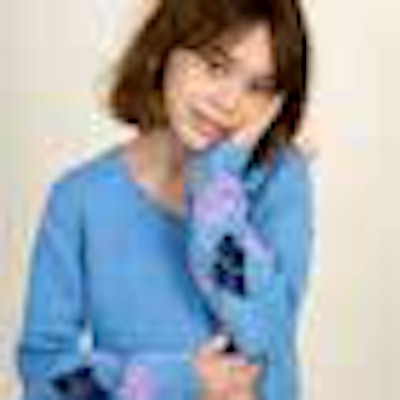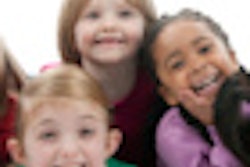
Since the U.S. surgeon general's report on oral health in America in 2000, strides have been made to incorporate its recommendations for oral health assessment into primary medical care, particularly among physicians caring for underserved children.
One residency program providing a hands-on experience for its trainees is the Family and Community Medicine program at the University of California, San Francisco, housed in the Family Health Center clinic at San Francisco General Hospital.
“This is a good opportunity to talk to parents about what they're feeding their kids.”
— Diana Coffa, MD, MPH, Family Health
Center, San Francisco
"Our curriculum has definitely expanded, and the residents appreciate having some knowledge of oral health issues," said Diana Coffa, MD, MPH, Family Health Center's assistant medical director and the faculty member who coordinates the oral health clinic.
Held two mornings a month, the clinic accepts patients referred by primary medical care providers of the Family Health Center for a more in-depth assessment of their oral health needs than can often be accomplished during a busy well-child medical visit.
"We encourage referrals by the age of 1 year and up to the age of 5 years," Dr. Coffa told DrBicuspid.com. "If we get a referral for an older child who has not seen a dentist, we generally accept the referral because we want to facilitate engagement with dental care."
After screening for acute complaints such as fever and pain, medical assistants provide the patients with toothpaste and an age-appropriate toothbrush for demonstration and for the family to take home. Once in the room with the patient, the physician utilizes an interview handout that directs the discussion through risk factors and provides guidance on various subjects.
 The Family Health Center clinic at San Francisco General Hospital gives finger brushes to patients 0 to 12 months old, a shortened triangle brush for those 13 months to 2 years old, and a regular toothbrush for patients older than 2 years.
The Family Health Center clinic at San Francisco General Hospital gives finger brushes to patients 0 to 12 months old, a shortened triangle brush for those 13 months to 2 years old, and a regular toothbrush for patients older than 2 years.Using bilingual English/Spanish oral health education materials from the American Academy of Pediatrics and some of their own materials designed for low-literacy populations, the family medicine residents learn to perform basic oral assessments, discuss dietary choices and the usefulness of fluoridated water, discuss communicability of cariogenic bacteria, provide anticipatory guidance and oral care teaching, and apply fluoride varnish.
"This is a good opportunity to talk to parents about what they're feeding their kids and how they're helping their kids make decisions about what to eat," Dr. Coffa said. "Often you get into parenting stuff like how to say no to your kid when they insist they want apple juice but you want them to drink water. Here, we're talking a little bit about teeth and a lot about lifestyle."
|
American Academy of Pediatric Dentistry recommendations The American Academy of Pediatric Dentistry (AAPD) recommends that children have a primary dental provider by age 1 or 6 months after the eruption of the first tooth, whichever comes first. Because infants and young children are much more likely to have primary medical care than dental care, educating the 105,000 family physicians and 45,000 pediatricians in the U.S. to perform assessments and conduct appropriate referrals is key, according to the AAPD. |
Family practice residents rotate through the morning clinic twice in the course of a month, in the first or second year of their three-year residency, providing seven to eight clinical hours of training. At first, the residents observe faculty conduct a visit, then faculty observes residents conduct visits until the residents feels comfortable to conduct the oral health visits on their own.
Tatiana Ivan, MD, a second-year family medicine resident rotating through the oral health clinic, recalls that most of the oral health training she received in medical school related to pharmacological effects such as xerostomia.
Dr. Ivan said she has found the three hours of didactic curriculum on oral health that she has received in residency helpful. "It focuses on knowing what normal is and being able to identify abnormal and then how to counsel patients" she said. "I think that three hours was sufficient, and then rotating through the oral health clinic is going to be super helpful."
The clinic considers adult dental care important to pediatric dental health as well, Dr. Coffa added.
"But we have extraordinary difficulty finding dental care for the parents of our pediatric patients," she said. "We make referrals, but most of the parents are unable to afford the care they need."
The priority of the clinic is to encourage each family to establish a dental home for their children, Dr. Coffa added.
"We refer every patient to a primary dentist," she said. "If the child is high-risk, we will track the referral to make the child actually followed up. We are lucky to have a number of health centers in our community that offer dental care to children, and we have little difficulty finding good pediatric referrals."



















